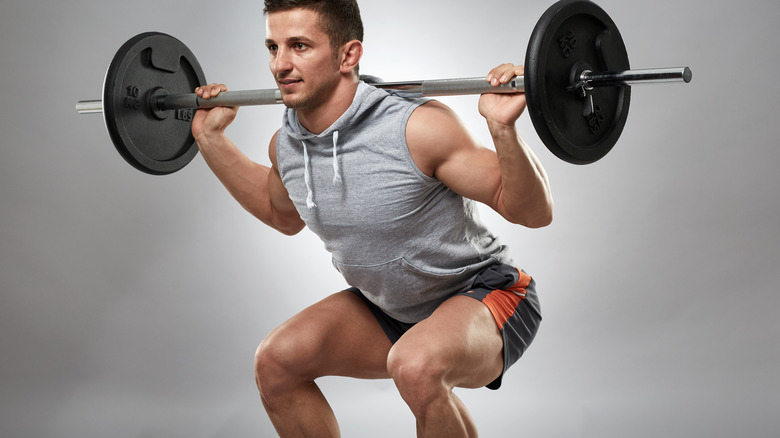The Jump Squat Variation You Should Stop Doing
Jump squats are a powerful plyometric exercise that pushes your muscles to their full capacity in a short period of time. This kind of exercise can be used for high-intensity interval training, or HIIT. Personal trainer Stephen Navaretta tells Insider, "This gives your entire body, especially your heart and core, a great workout."
The jump squat will get your heart rate pumping, your legs burning, and, because it's a compound movement, it will set more than your quads on fire. The jump squat will also work the glutes, core, hamstrings, hip flexors, and calves (via Verywell fit). The jump squat is an overall excellent choice of exercise to add to your fitness routine for weight loss, muscle building, and to improve athletic performance.
While there are many variations of the jump squat, performance specialist Matt Cheng, CSCS, tells Best Life Online that there is one variation to steer clear of.
Here is why you should avoid the barbell while perfoming jump squats
Performing a jump squat while holding a barbell on your back is a big no-no, according to trainer Matt Cheng, who tells Best Life Online that the barbell adds too much weight to the plyometric move, which can result in injury. The extra weight of the barbell places too much pressure on the hip, knee, and ankle joints, as well as the back.
The India Times reports that standard back squats with a barbell can wreak havoc on the body, affecting the lower back, hips, and knees, even when properly performed. The jump squat version of this adds to the pressure in these areas, which increases the risk for injury. Rather than jump squat with a barbell on your back, Cheng suggests starting with a bodyweight jump squat and then adding variations like box jumps and dumbbell jump squats. Cheng shares, "Just mastering the bodyweight jump squat or changing the placement of the weight will make a big difference in the way you move and will save you from a lot of pain."

